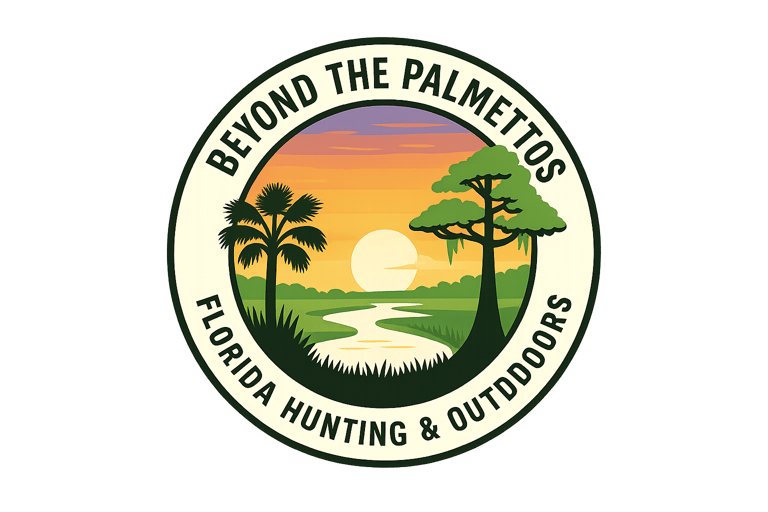WMA Brochures Made Simple: Seasons, Regulations & Bag Limits
WMA Brochures Made Simple: Seasons, Regulations & Bag Limits
10/4/20257 min read
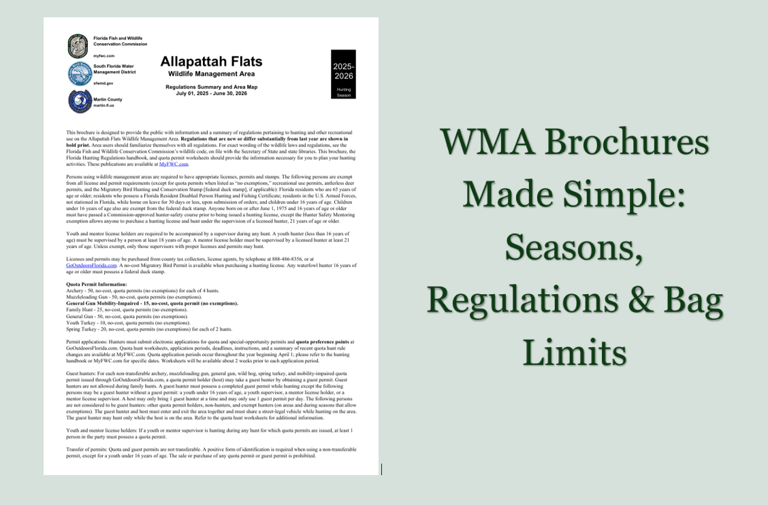

When you open a Florida WMA brochure, the section that usually catches your eye first is the hunting seasons and hunting related regulations. It’s where most people start—and for good reason. This section tells you what you can hunt, when you can hunt it, and how you can legally do it. But it can also be one of the most confusing parts of the brochure, especially if you’re new to public land hunting.
Let’s break it down using two great examples: Allapattah Flats WMA in Martin County and Osceola WMA in north central Florida. Both are managed by FWC, both require a close reading of their brochures, but they differ dramatically in what they allow and how they’re structured.
Understanding Hunt Seasons
Every WMA in Florida has its own set of hunting seasons and hunts based on the wildlife populations, habitat, and management goals of that specific area. That means you can not assume that “deer season” or “spring turkey season” happens during statewide seasons on all areas.
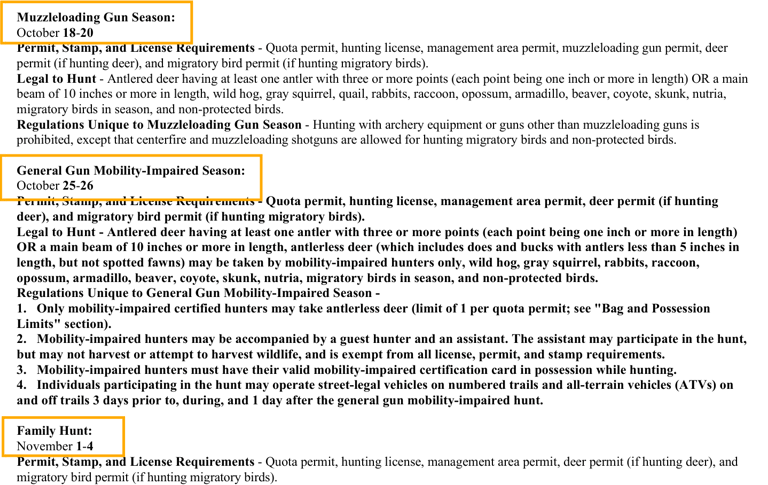

If you look at the Allapattah Flats brochure (2025-2026), you’ll see the following hunt dates:
Archery: September 13 -16, 20 - 23, 27 - 30, & October 4 - 7
Muzzleloading gun: Oct. 18 - 20
General gun Mobility Impaired: Oct. 25-26
Family Hunt: Nov. 1-4
General gun: Nov. 8 - 12
Small game: Nov. 13 - Jan. 11
Spring turkey: Mar. 7 - 10 and 11 - 15
By comparison, Osceola WMA has a more open schedule. For example, the 2025–2026 brochure shows multiple hunt zones and separate dates for still hunts and dog hunts:
Archery: Sept. 20 - Oct. 12
Muzzleloading Gun: Oct. 18 - 25
General Gun: Nov. 8 - Jan. 4
Fox, Raccoon, Opossum and Bobcat Season: Nov. 8 - March 1 (dog hunt area only)
Small Game Season: Jan. 5 - March 1
Spring Turkey: March 21 - April 26
➡️ Key takeaway: Don’t skip the date ranges. They vary widely not only by area but also by hunt type. Write down your area’s specific season dates on a calendar, or better yet, highlight them in the brochure.
Permit Requirements
Every season (or hunt) listed also includes a section called "Permit, Stamp, and License Requirements." This tells you what licenses and permits are required to hunt during that specific hunt or season.
For instance, Allapattah Flats requires:
Quota permit: For archery, muzzleloading gun, general gun, and spring turkey seasons.
No quota required: For small game.
That means if you don’t draw or acquire a quota permit for an archery, muzzleloading gun, general gun, or spring turkey hunt, you cannot hunt this WMA.
Meanwhile, Osceola WMA has a wider mix of opportunities:
Some hunts are limited to quota permit holders only.
Others are open without a quota, such as Archery season or during small game season.

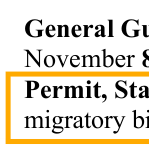


As a hunter, this tells you how to plan your year. You might focus your quota application strategy on a high quality quota hunt and then hunt Osceola during periods when you don't have quota permit.
➡️ Pro tip: The phrase “quota permit required” is your signal that you’ll need to apply in advance through the FWC quota system. Never assume you can just show up.
Interpreting Legal Weapons
Each season also specifies which weapons or methods of take are allowed. These change depending on the type of season and the area:
Archery Season: Typically bow only (no firearms) and crossbow by individuals possessing a crossbow permit.
Muzzleloading Gun Season: Muzzleloaders only.
General Gun Season: Centerfire rifles, shotguns, muzzleloading guns, crossbows and bows typically allowed.
Small Game Season: Shotguns (with certain ammo restrictions), centerfire rifles, airguns and bows.
Spring Turkey Season: Shotguns and bows only.
Again, this will vary greatly by area. Make sure to check each area brochure where you will find this spelled out clearly under each season/hunt section AND the "Guns" section.

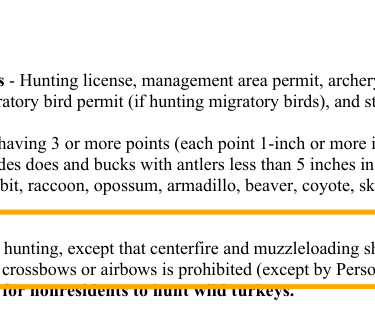
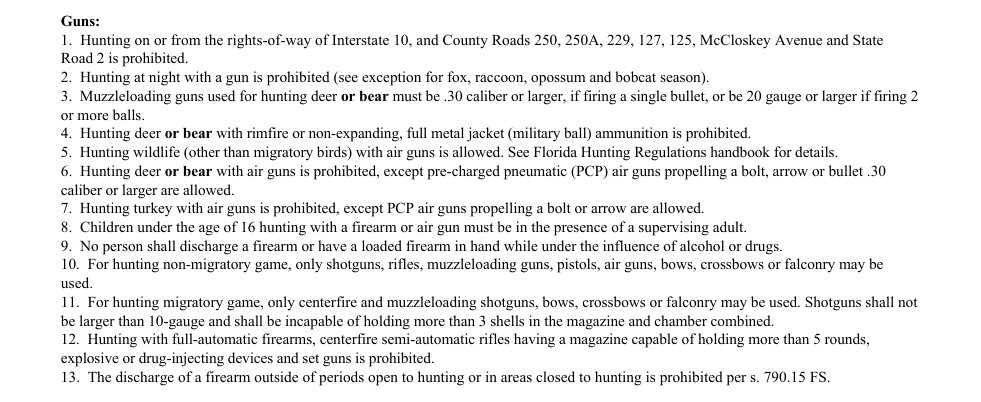

The first place you should check to determine what weapon/firearm is legal during your hunt is under the specific hunt section. For example, during the archery season "Only archery equipment may be used for hunting, ...."
The second place to check is under the "Guns" section, which lists out the more general regulations regarding different types of firearms that are allowed or not allowed. For example, you are not allowed to hunt with a full-automatic firearm, centerfire semi-automatic rifle that has a magazine capable of holding more than 5 rounds. You also cannot hunt deer or bear with rimfire or non-expanding, full metal jacket (military ball) ammunition.
Bag Limits and Species Regulations
Every brochure lists Bag and Possession Limits for each game species. This tells you how many animals you can harvest daily and possess in total.
Here’s what that looks like in practice:
On Allapattah Flats, deer are listed under the Bag Limits section with the following:
"Area limits: 1 antlered deer (or 1 antlerless deer during archery season) per quota permit, except during the family hunt the bag limit for antlered deer is 2 per quota, but only 1 per person."
This means that you can only take one antlered deer (or one antlerless deer during archery season) per quota permit.
Also note the line at the top, which tells you that the host MUST SHARE THEIR BAG LIMIT. So, if you have one quota and you bring a guest, between the two of you, you can only harvest one deer during your quota hunt.
The second location you need to use to determine what is legal to take is within each of the listed hunting seasons under "Legal to Hunt." This example shows that during the Muzzleloading Gun Season, you are only allowed to take antlered deer having at least one antler with three or more points (where each point only counts as a point if it is one inch or more in length) OR it has a main beam length of 10 inches or more. It also lists other species legal to take during this season.
➡️ Key takeaway: Never rely on statewide bag limits alone. WMAs often have tighter limits to manage local populations.
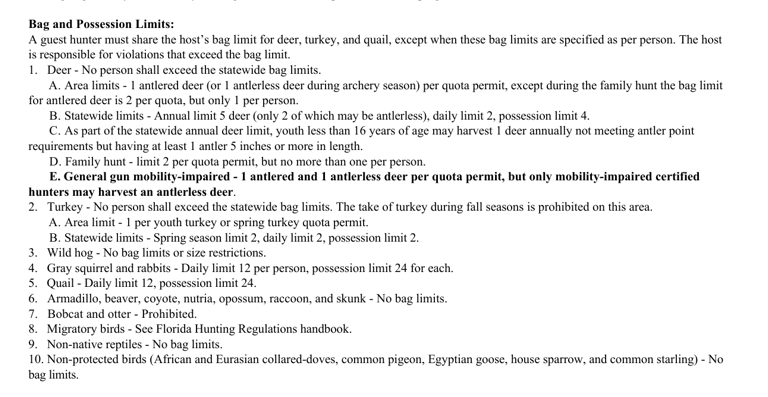


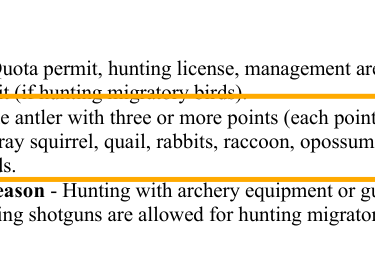
Interpreting the Other Regulation Sections
The first few pages of each brochure includes additional rules that apply throughout the area, not just during hunting season. These might cover:
Camping regulations (where and when it’s allowed)
Vehicle use (use of ATVs, side by sides, or accessible roads)
Check stations (if and where to check harvested game)
Fishing and other recreation (permitted or not)
➡️ Example from experience: I’ve seen hunters drive down a side trail thinking it was a legal access road only to get a warning (or a fine) because it wasn’t listed in the brochure’s map legend.
How to Cross-Reference the Rules with the Map
One of the smartest ways to use this section is to cross-check hunt zones, access roads, and boundaries on the map.
Here are some common items found on a WMA brochure map:
WMA boundaries and private property boundaries located within the WMA.
Dog hunt areas vs still hunt areas. The boundaries correspond with the rules in the text.
Some WMAs only allow vehicles on named and numbered roads shown on the brochure map.
Check stations, designated entrances, paved and improved roads, and unimproved roads.
Camping locations
No-hunt zones
Pro Tip: All of FWC’s WMA brochures are available for free on the Avenza Maps app. Each map is geo-referenced, which means you can open it in the app and see your live location on the WMA map, even without cell service.
This feature is a game changer for hunters and outdoor users. You can track your movement in real time, drop pins on campsites or game trails, and make sure you’re staying within legal boundaries. Just download your WMA’s brochure map before you head out, and you’ll have a reliable navigation tool right in your pocket.
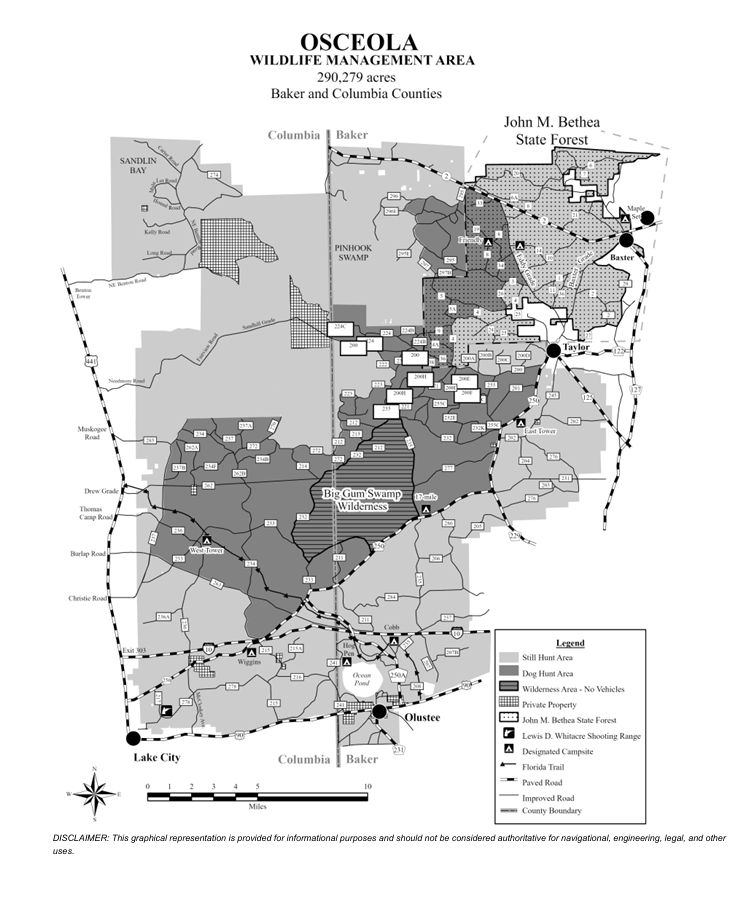

Using the Brochure to Plan Your Year
Once you understand how to read the brochure, it becomes a planning tool, not just a rule sheet. Here’s how:
Start with the hunt types that interest you most (deer, turkey, small game).
Write down the date ranges for those hunts on each WMA you might visit.
Note which require quota permits.
Highlight your available weapon types.
Double-check bag limits and area-specific notes.
In just a few minutes, you’ll have a full-season overview that lets you plan trips around your schedule and the hunts you care about most.
➡️ Pro tip: Create a “My Hunts” note on your phone where you list each WMA, hunt type, and dates. Link the PDF of the brochure right there. Then add the quota application timeline to your calendar, so you don't forget to apply!
Avoiding Common Mistakes
Even experienced hunters slip up when switching between WMAs. The most common mistakes I’ve seen:
Assuming statewide rules apply everywhere.
Not acquiring a quota permit.
Misreading the bag limits.
Hunting or accessing the WMA outside legal hours listed in the brochure.
Putting hunting equipment out too far in advanced (most areas only allow it to be placed the day before each hunt).
Avoid these by giving the brochure a full read every year, even if you’ve hunted the same WMA before. Rules can (and do) change.
Wrapping Up
Once you know how to read the Seasons and Regulations section, you’re halfway to mastering your WMA brochure. You’ll start to notice patterns—like which hunts usually require quotas, which areas prohibit rifles, and how the small game season fills the gap between major hunts.
In the next post, we’ll dig into the Maps and Access section—where to go, how to navigate gates and check stations, and hunting equipment and game reporting requirements.
Until then, grab your local WMA brochures, highlight the dates that interest you, and plan your next public land adventure the smart way.
